Persian Cat Facts – Personality, Characteristics, Quality & Traits
Lets dive right into - Persian Cat Facts – Personality, Characteristics, Quality and Traits
Imagine doll like faces with big round eyes and long shiny fur? That is Persian Cat for you!
Persian cats are not just visually stunning; they are also one of the most beloved and popular cat breeds worldwide. With their friendly nature, they form strong bonds with other cats, dogs, children, and their owners. These glamorous cats require regular grooming to maintain their appearance, more so than other cat breeds.
Cat Behaviorist Persian Cat Characteristic Guide
History of Persian Cats
Origins & Early Records
Persian cats are easily recognized by their long-haired coat and round face with a short muzzle. Known as the Persian Longhair in English-speaking countries, they are called Iranian cats in the Middle East and Shirazi Cats in Iran, named after the city of Shiraz in Persia.
Persian Cats in Europe & the U.S.
In 1620, traders brought Persian cats from Iran to Italy. While the exact details of their origin remain a mystery, many long-haired cats were depicted in ancient hieroglyphics. As their popularity grew, Persian cats were introduced to Europe, where breeding began in Italy and France. They debuted at the world’s first organized cat show in London in 1871 and later gained popularity in the United States in the early 1900s.
Types of Persian Cats
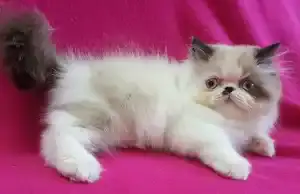
Punch /Flat Face Persian Cat
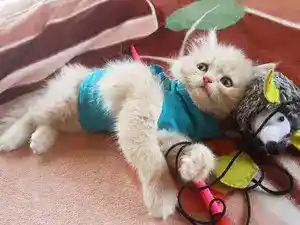
Doll Face Persian Cat
Always keep in mind – It takes 3 weeks to create a habit, and 3 weeks to break a habit. Once you get a cat please be patient.
Grooming and Care of Persian Cats
It’s not easy to groom a cat. With proper attention, their coat becomes even more lustrous and healthy.
Grooming of a Persian cat includes-
- Brushing their lengthy hair once daily to remove tangled hairs and dirt.
- Bathing once in a month to prevent bacterial infections.
- Nails to be trimmed once or twice a week
Persian Cats require weekly ear cleaning to prevent wax buildup and infections.
Some have watery eyes and can be cleaned with damp cotton balls or cat wipes.
- The litter box has to be cleaned every day, as litter may lodge to your cats’ paws or coat
For a Persian kitten, more care and attention is needed. Remember to use good brand kitten formula, which is available at veterinarian clinics and pet stores. The canister has specific feeding instructions and amounts. By 6 weeks of age, your kitten can start eating soft canned food along with milk. By 10 weeks of age, the kitten will be able to eat kitten food (hard or soft) and can be weaned off milk to drinking water
Also Read: How To Check Cat Fever
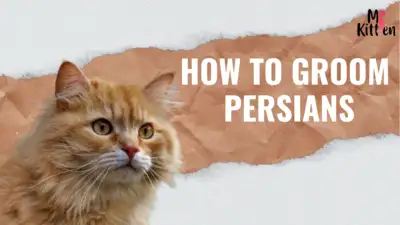
Interesting Persian Cat Personality, Nature and Habits
Persian Cat Personality: Calm and Composed Companions
Persian Cats are a calm breed with a relaxed temperament. They aren’t very talkative but are very sturdy breeds. These cats can adjust to any situation if it’s free from any disturbances. Persian Kittens are calm, compose, prefer more attention and are also peace-loving.
Indoor Lifestyle: Best for Persian Cats
The best suggestion would be to keep Persian cats indoors where they are well-groomed and cleaned daily, and also some may not bear hot weather. According to their physical level and small fluffy structure, they are not able to fight for dangers so they are mostly kept away from the chaos. They prove to be lazier and can sleep more than normal cats. Another most distinguishing feature about them is they do not like to jump or hop like other cats.
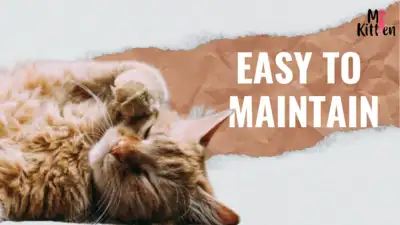
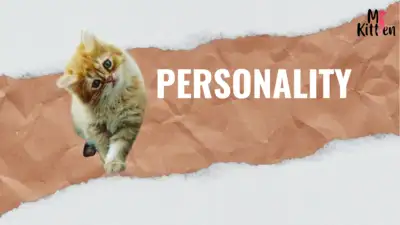
Health of Persian Cats
Spending more time with a cute little Persian kitten can be very pleasant. As with raising any pet, challenges will come and go, and you can face them with a little tolerance it will help grow more patience in you.
- Regular Deworming.
- Regular Vaccination.
Some common signs of sickness in Persian Kittens
- Less Play full
- Sleeping more than normal.
- Lack of interest in food or grooming.
- Shallow breathing and breathing through an open mouth.
Also Read: How To Check Cat For Worms
Persian Cat Characteristics and Physical Form
Persians Cats are small to medium-sized cats. They can weigh 7 to 12 pounds.
Because of their stature they are called Brachycephalic, or short and flat, face structure. Having flat face of this unique shape makes it difficult for them to pick up their food and eat it. Thus to pick up its food, a Persian cat uses the underside of its tongue.
They come in two basic types – doll face Persian cats and punch face or flat face Persian cats
Persians come in 200 variant colors, ranging from white to smoke to tri-colored markings. They have a very distinctive appearance with a large round head, large round eyes, a short nose, full cheeks, small ears with rounded tips.
The big head is supported by a short thick neck and a masculine body these features collectively resemble ‘cobby’. Also, there are short, thick, and strong with large, round, firm paws. The tail is short but proportional to the length of the cat’s body.
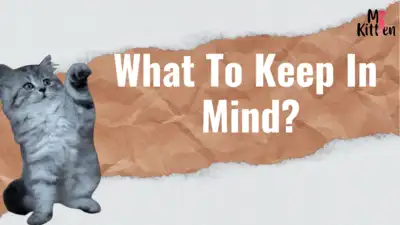
How to take Care of Persian Cats At Home- 3 Ways
Congratulations on your new feline friend! Now its time to giving good training to your Persian cat. Mykitten will help you on your journey to on how to train your kitten to your new home.
Always keep in mind – It takes 3 weeks to create a habit, and 3 weeks to break a habit. Once you get a cat please be patient.
First Week after you Rehome a Persian
Once you get a cat Never yell or fuss. Cats are small babies and they tend not to come close to you if they don’t feel loved. The best way is to spoil them as normal human babies. Love them with all your heart and only this way they can find a friend in you.
Second Week after you Rehome a Persian
During the first few weeks of your new Persian cat is in your home make sure to have a baby talk and pamper with baby toys and love. Try having a sweet conversation with your Persian cat. Doing this will encourage to form a bond with you.
Third Week after you Rehome a Persian
Make sure to take your cat to every room in the house to explore and show him where his new stuff is like the food and water bowl, litter tray, scratching post. Also gently rub his paws in the litter tray to show him how to use it. Make sure the litter tray area is private and not closed out by a door otherwise you might have potty issues later.

Before you get a Persian kitten, what to look into
- The best way to get a cat is to know if you are purchasing a healthy cat from a reputable Persian breeder is by getting to know the breeder.
- There are many backyard breeders who force breed. Always look for professional breeders who have knowledge of how to breed Persian cats.
- Such kittens have small fur length and might end up not well-bred. When you get a cat always ask for parents pictures- this way you will get a fair idea about the breed and type.
- There are many fraud Persian cat breeders in India who breed Indian breed with Persian Cats to increase the litter size.
Please note that the cat will stay with you for its entire lifetime – hence purchase a healthy one.
Nowadays there are a lot of breeders who force breed and keep the breeding queen in the cat cycle for as long as 6 years. By doing this the breeding queen itself is very weak to breed and if bred the cats will be malnourished. Rule of thumb is to be confident in the breeder from where you get your Persian cat for Sale
We also have breeds like Persian, Ragdoll, Maine Coon, Siamese, Exotic Shorthair, Bengal, and British Shorthair.


